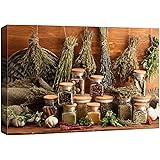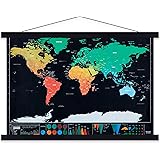Unlocking the Enduring Charm: Essential Traditional Kitchen Designs for Your Home
Creating a kitchen that exudes timeless elegance and warmth is a coveted goal for many homeowners. As showcased in the accompanying video, the essence of traditional kitchen designs lies in their ability to blend classic aesthetics with practical functionality, resulting in a space that feels both grand and inviting. This style, far from being stuck in the past, celebrates enduring craftsmanship and design principles, offering a sanctuary from fleeting trends.
While contemporary styles often chase the next big thing, a traditional kitchen remains steadfast, offering a sense of stability and comfort. It’s a design philosophy that prioritizes quality materials, intricate detailing, and a layout that supports gathering and cooking. Consequently, understanding the foundational elements of this aesthetic is crucial for anyone looking to imbue their home with such lasting appeal.
Embracing the Timeless Appeal of Traditional Kitchen Designs
The allure of a traditional kitchen often comes from its ability to evoke a sense of heritage and established grace. Unlike minimalist designs that strip away ornamentation, traditional spaces embrace details, much like a classic novel unfolds its story through rich descriptions. These kitchens are characterized by their comfort and familiarity, making them perfect for family life and entertaining alike. A traditional approach doesn’t mean sacrificing modern conveniences; instead, it means integrating them seamlessly within a classic framework.
Consider the visual journey: every element, from the robust cabinetry to the detailed lighting, contributes to an overarching narrative of elegance. However, achieving this balance requires a keen eye for historical context and an understanding of how various components interact. The goal is to create an environment that feels both authentic to a specific period and perfectly suited for today’s living, a feat easier said than done without proper guidance.
Crafting the Foundation: Traditional Cabinetry and Layouts
At the heart of any traditional kitchen design lies its cabinetry, which serves as the room’s architectural backbone. Much like a bespoke suit, traditional cabinets are often characterized by their sturdy construction and detailed finishes. The most common styles, such as raised panel, recessed panel (often called Shaker, when adapted for a more streamlined look), and ornate inset doors, instantly convey a sense of classic craftsmanship. While raised panels offer a more formal appearance with their dimensional center panels, inset doors provide a flush, high-end look reminiscent of custom furniture, fitting perfectly within the frame.
Choosing the right layout is equally vital, as it dictates the kitchen’s flow and functionality. Traditional kitchen designs frequently feature classic U-shaped, L-shaped, or galley configurations, often enhanced by a central island. An island, acting as the kitchen’s anchor, can provide additional workspace, storage, and even a casual dining area, akin to a town square in a bustling city. Conversely, open-concept designs might integrate the kitchen more broadly into living spaces, yet still maintain its traditional integrity through consistent material choices and design elements.
The Classic Appeal of Cabinetry Styles
Traditional cabinetry extends beyond mere storage; it’s a statement of style and quality. Styles like the timeless Shaker cabinet, with its clean lines and simple recessed panel, offer a versatile base that can lean either traditional or transitional, depending on hardware and finish. More elaborate options, such as beaded inset or furniture-style cabinetry, feature intricate detailing around the door and drawer fronts, elevating the space with undeniable sophistication. These choices define the room’s character, setting the tone for all other design elements.
Beyond the door style, the finish plays a crucial role. Opting for painted finishes in soft whites, creams, or muted greens and blues can brighten the space while maintaining a traditional feel. Stained woods, conversely, introduce a rich, natural warmth, deepening the sense of history and permanence within the kitchen. The decision between painted or stained wood influences the entire room’s ambiance, much like a painter selects their primary palette.
Functional Yet Elegant Layouts
A well-conceived traditional kitchen layout seamlessly integrates beauty with practicality. The classic “work triangle” connecting the sink, refrigerator, and stove remains a cornerstone of efficient design, ensuring smooth movement during meal preparation. However, traditional designs also often incorporate dedicated zones, such as a baking station with a built-in mixer lift or a beverage bar, creating specialized hubs within the larger space.
Moreover, features like decorative hoods over the range, often custom-built and clad in wood or plaster, serve as prominent focal points. These elements not only enhance the aesthetic appeal but also contribute to a functional and harmonious cooking environment. They are not merely ornamental; rather, they are functional art pieces that ground the room and draw the eye, much like a grand fireplace in a historic home.
Selecting Surfaces: Countertops, Backsplashes, and Flooring
The surfaces within a traditional kitchen are instrumental in defining its tactile and visual richness. These elements, much like the layers of a symphony, contribute to the overall texture and depth of the design. Choosing materials that are both durable and aesthetically appropriate is paramount for achieving the desired traditional look and feel.
Timeless Countertop Choices
For countertops, natural stone reigns supreme in traditional kitchens, offering both beauty and resilience. Granite, with its varied patterns and robust nature, has long been a favorite, providing a practical and attractive surface. Marble, though more porous, offers unparalleled elegance and a classic, luxurious feel, often developing a beautiful patina over time like an antique silver piece. Soapstone, with its soft, matte finish and subtle veining, provides a warm, historic charm, while butcher block adds a rustic, inviting touch, perfect for prep areas.
The edge profile of the countertop also subtly contributes to the traditional aesthetic. Ogee, bullnose, or beveled edges soften the lines and add a touch of refined detail that a simple straight edge might miss. These small considerations collectively build a cohesive traditional appearance.
Backsplashes with Character
A backsplash in a traditional kitchen typically complements the countertops while adding its own layer of visual interest. Classic subway tiles, often in white or cream, are an iconic choice, offering a clean, understated backdrop that allows other elements to shine. These can be laid in various patterns—stacked, offset, or even herringbone—to add subtle dynamism.
Other popular options include natural stone tiles, such as travertine or marble mosaics, which echo the richness of the countertops. Decorative inserts or a focal point behind the range, perhaps an intricate tile mural or a panel of natural stone, can act as an artistic centerpiece, drawing attention without overwhelming the traditional aesthetic. It’s akin to adding a thoughtful piece of art to a beautifully wallpapered room.
Foundational Flooring Options
The floor of a traditional kitchen should be as enduring and beautiful as the rest of the space. Hardwood flooring, particularly in darker stains or rich natural tones, is a quintessential choice, offering warmth, durability, and a classic appeal that never goes out of style. Its natural variations add depth and character, much like the grain of fine furniture.
Alternatively, natural stone tiles such as slate, travertine, or limestone provide a sturdy, elegant foundation, especially suitable for high-traffic areas. Porcelain tiles that mimic natural stone or wood are also excellent, low-maintenance alternatives, offering the traditional look with modern practicality. Ultimately, the flooring choice should harmonize with the overall color scheme and material palette to create a unified and inviting traditional kitchen.
The Details That Define: Fixtures, Appliances, and Hardware
In a traditional kitchen, it’s often the smaller, meticulously chosen elements that truly elevate the space. These details, much like the accessories that complete an outfit, tie everything together and imbue the room with a sense of authenticity and bespoke charm. Far from being afterthoughts, fixtures, appliances, and hardware are critical components of a successful traditional design.
Sinks and Faucets: Classic Touchstones
The sink, often a focal point, particularly in front of a window, should reflect the kitchen’s traditional spirit. The farmhouse or apron-front sink, with its deep basin and exposed front, is perhaps the most iconic choice, evoking a rustic yet refined sensibility. Crafted from fireclay, cast iron, or even copper, these sinks are both highly functional and visually appealing. For faucets, bridge faucets or those with classic cross-handle designs in polished nickel, unlacquered brass, or oil-rubbed bronze add a historical touch, often featuring elegant curves and intricate details that harken back to bygone eras. These are not just water dispensers; they are pieces of plumbing artistry.
Seamlessly Integrated Appliances
Modern appliances, while essential, can sometimes disrupt a traditional aesthetic. The solution lies in seamless integration. Panel-ready appliances, which allow for custom cabinetry panels to be applied to refrigerators, dishwashers, and even microwaves, are a hallmark of sophisticated traditional kitchen designs. This strategy ensures that large, contemporary machines blend invisibly into the cabinetry, maintaining a cohesive, unbroken visual line. Alternatively, freestanding appliances with a retro or vintage aesthetic can add a unique character, mimicking the look of older models while offering modern performance. The goal is to make technology serve the design, not dominate it, much like an orchestra conductor ensures all instruments play in harmony.
Hardware: The Jewelry of the Kitchen
Cabinet hardware—knobs, pulls, and latches—acts as the jewelry of the traditional kitchen, providing critical finishing touches. The right hardware can significantly influence the overall feel of the room. Options like cup pulls, bin pulls, and various styles of knobs in materials such as brass, bronze, pewter, or even ceramic, are favored for their period-appropriate designs. An unlacquered brass finish will develop a rich, living patina over time, adding to the kitchen’s sense of history and character. Conversely, oil-rubbed bronze provides a deeper, more antique look, while polished nickel offers a brighter, more refined shine. The choice of hardware is not merely functional; it’s a statement of style, much like selecting the perfect cufflinks for a tailored suit.
Illuminating and Adorning: Lighting and Decorative Elements
Lighting and decorative elements are the layers that truly bring a traditional kitchen to life, infusing it with warmth, character, and practical illumination. These components are like the final brushstrokes on a masterpiece, enhancing depth and dimension.
Layered Lighting for Warmth and Function
Effective lighting in a traditional kitchen relies on a layered approach, combining ambient, task, and accent lighting. Ambient lighting, often provided by elegant chandeliers or flush-mount fixtures, bathes the entire space in a soft glow. Task lighting, such as under-cabinet lights or pendant lights above an island, focuses illumination where it’s needed most for meal preparation. Accent lighting, perhaps from sconces or in-cabinet lights, highlights decorative elements or prized dishware, creating focal points and adding dramatic flair. The fixtures themselves should align with the traditional aesthetic, featuring classic materials like wrought iron, brass, or aged bronze, often with glass or fabric shades that diffuse light warmly. This thoughtful layering ensures both functionality and an inviting atmosphere.
Architectural Flourishes and Finishes
Architectural details are paramount in traditional kitchen designs, adding depth and a sense of bespoke craftsmanship. Crown molding, a classic trim element, defines the top edge of cabinetry or walls, providing an elegant transition to the ceiling. Corbels and decorative brackets, often found supporting shelves or an island overhang, contribute to a furniture-like feel. Custom range hoods, as mentioned, become grand focal points, sometimes adorned with intricate carvings or paneled to match the cabinetry. Beadboard or wainscoting on walls or island bases adds a subtle texture and country-inspired charm, grounding the space in timeless elegance. These decorative touches are not frivolous; they are integral to the traditional narrative, much like the ornate carvings on a historic building.
Harmonizing Hues: Traditional Color Palettes
The color palette in a traditional kitchen serves as its emotional core, influencing the mood and perceived warmth of the entire space. Unlike the bold, stark contrasts often found in modern designs, traditional schemes favor harmonious, inviting tones.
Embracing Neutrals and Earth Tones
Traditional kitchen designs frequently lean on a foundation of classic neutrals and gentle earth tones. Soft whites, creamy off-whites, and warm greys provide a clean yet inviting backdrop, allowing other elements to shine without overwhelming the senses. These colors create a bright and airy feel while maintaining a sense of sophistication. Similarly, muted greens, dusty blues, and warm beige tones drawn from nature contribute to a calm and comforting atmosphere, evoking the feeling of a welcoming country home. These foundational hues are the canvas upon which the rest of the design is painted, offering versatility and timeless appeal.
Strategic Accents for Depth
While neutrals form the base, strategic pops of color can add depth and personality to a traditional kitchen. Deep blues, such as navy or slate, can be used on a kitchen island or lower cabinetry to create a striking contrast, acting as an anchor in the design. Sage green, cranberry red, or mustard yellow might appear in textiles, dishware, or a backsplash detail, offering controlled bursts of vibrancy. These accent colors are like carefully chosen accessories; they complement the main ensemble without overpowering it, enhancing the richness of the overall scheme. Ultimately, a traditional kitchen embraces a palette that feels classic, cohesive, and deeply inviting, ensuring that the space remains a cherished part of the home for years to come.











